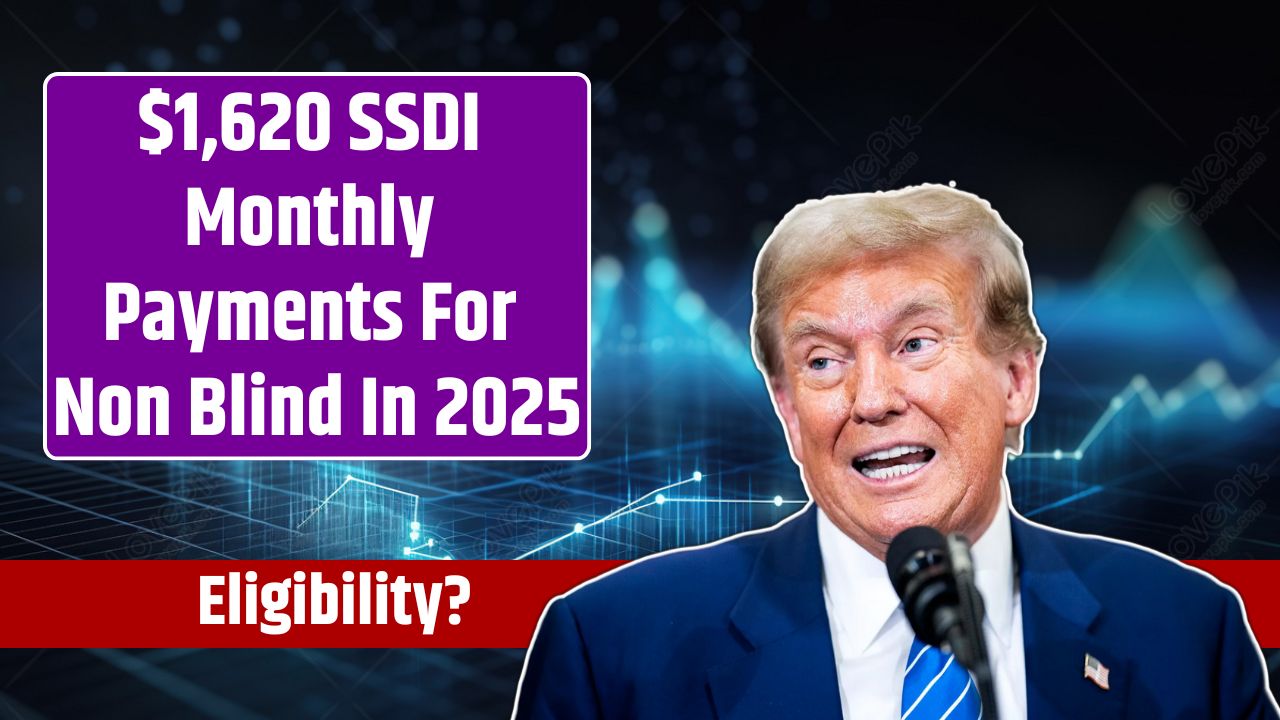The Social Security Disability Insurance (SSDI) program provides essential financial support for Americans who can no longer work due to a disabling condition.
In 2025, SSDI payments will increase, ranging from $1,620 to $2,700 per month, thanks to a 2.5% Cost-of-Living Adjustment (COLA).
This guide explains the new payment amounts, eligibility criteria, payment schedules, and strategies to maximize your benefits.
Key SSDI Updates for 2025
| Details | Insights |
|---|---|
| New Payment Range | $1,620 to $2,700 per month |
| COLA Increase | 2.5% |
| SGA Limits | $1,620/month (non-blind); $2,700/month (blind) |
| Trial Work Period Earnings | $1,160/month |
| Payment Schedule | 2nd, 3rd, or 4th Wednesday (based on DOB) |
| Maximum Benefit | Up to $4,018 for full retirement age |
These updates aim to align SSDI payments with rising living costs and economic conditions, ensuring beneficiaries can maintain their purchasing power.
Why SSDI Payments Are Increasing in 2025
The 2.5% COLA adjustment accounts for inflation, ensuring SSDI recipients can keep up with higher expenses for necessities like housing, food, and healthcare.
Example Calculation
If you received $1,580 in 2024, the 2.5% increase means your new payment would be approximately $1,619 in 2025. Over a year, this adjustment can add meaningful support to families relying on SSDI benefits.
Additional adjustments include updates to the Substantial Gainful Activity (SGA) limits and Trial Work Period (TWP) thresholds, which reflect the current economic landscape.
SSDI Eligibility Criteria
1. Work History
SSDI eligibility requires sufficient work credits, based on your employment history:
- 1 credit earned for every $1,810 in wages (2025 figures).
- Maximum of 4 credits per year.
- Typically, 40 credits (10 years of work) are required.
Younger individuals may qualify with fewer credits depending on their age and work history.
2. Disability Criteria
Your condition must:
- Prevent you from engaging in Substantial Gainful Activity (SGA).
- Be expected to last at least 12 months or result in death.
- Be listed in the SSA’s List of Impairments or equivalent in severity.
Comprehensive medical documentation is critical to prove your eligibility. Visit the SSA Disability Planner for detailed guidelines.
2025 SSDI Payment Schedule
SSDI payments are distributed monthly based on your birth date:
| Birthdays | Payment Day |
|---|---|
| 1st–10th | 2nd Wednesday |
| 11th–20th | 3rd Wednesday |
| 21st–31st | 4th Wednesday |
Monthly Payment Dates
| Month | 2nd Wednesday | 3rd Wednesday | 4th Wednesday |
|---|---|---|---|
| January | 8th | 15th | 22nd |
| February | 12th | 19th | 26th |
| March | 12th | 19th | 26th |
| April | 9th | 16th | 23rd |
| May | 14th | 21st | 28th |
| June | 11th | 18th | 25th |
| July | 9th | 16th | 23rd |
| August | 13th | 20th | 27th |
| September | 10th | 17th | 24th |
| October | 8th | 15th | 22nd |
| November | 12th | 19th | 26th |
| December | 10th | 17th | 24th |
Maximizing SSDI Benefits
1. Report Life Changes Promptly
Notify the SSA if:
- You return to work or change your income.
- You move or change your address.
- Your marital status changes.
This ensures your records are up-to-date, preventing overpayments or penalties.
2. Use the Trial Work Period
The Trial Work Period (TWP) allows beneficiaries to test their ability to work without losing SSDI benefits. In 2025:
- You can earn up to $1,160/month for nine months within a rolling 60-month period.
- Payments continue during this trial period.
3. Create a My Social Security Account
Use the SSA’s online portal to:
- Track benefit payments.
- Estimate future benefits.
- Update personal information.
Sign up at www.ssa.gov/myaccount.
What to Do If You’re Not Eligible
If you don’t meet SSDI criteria, consider:
- Supplemental Security Income (SSI): For individuals with limited income and resources.
- Vocational Rehabilitation Programs: Support for returning to the workforce.
- Private Disability Insurance: Offered through employers or personal policies.
The SSDI updates for 2025 bring much-needed financial relief, with payments ranging from $1,620 to $2,700. Staying informed about eligibility, payment schedules, and program rules helps you maximize these benefits.
Whether you’re a current beneficiary or planning to apply, proactive planning ensures financial stability and peace of mind.



















